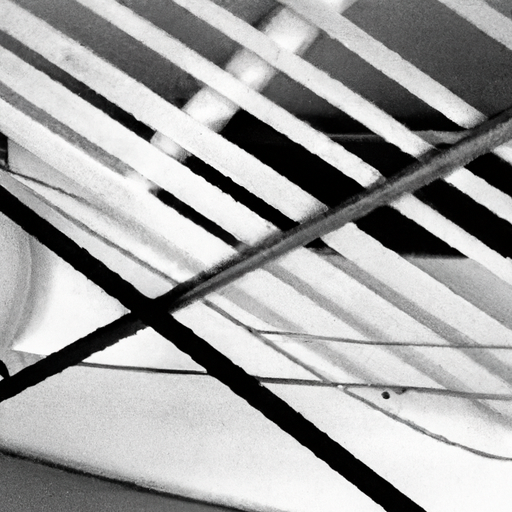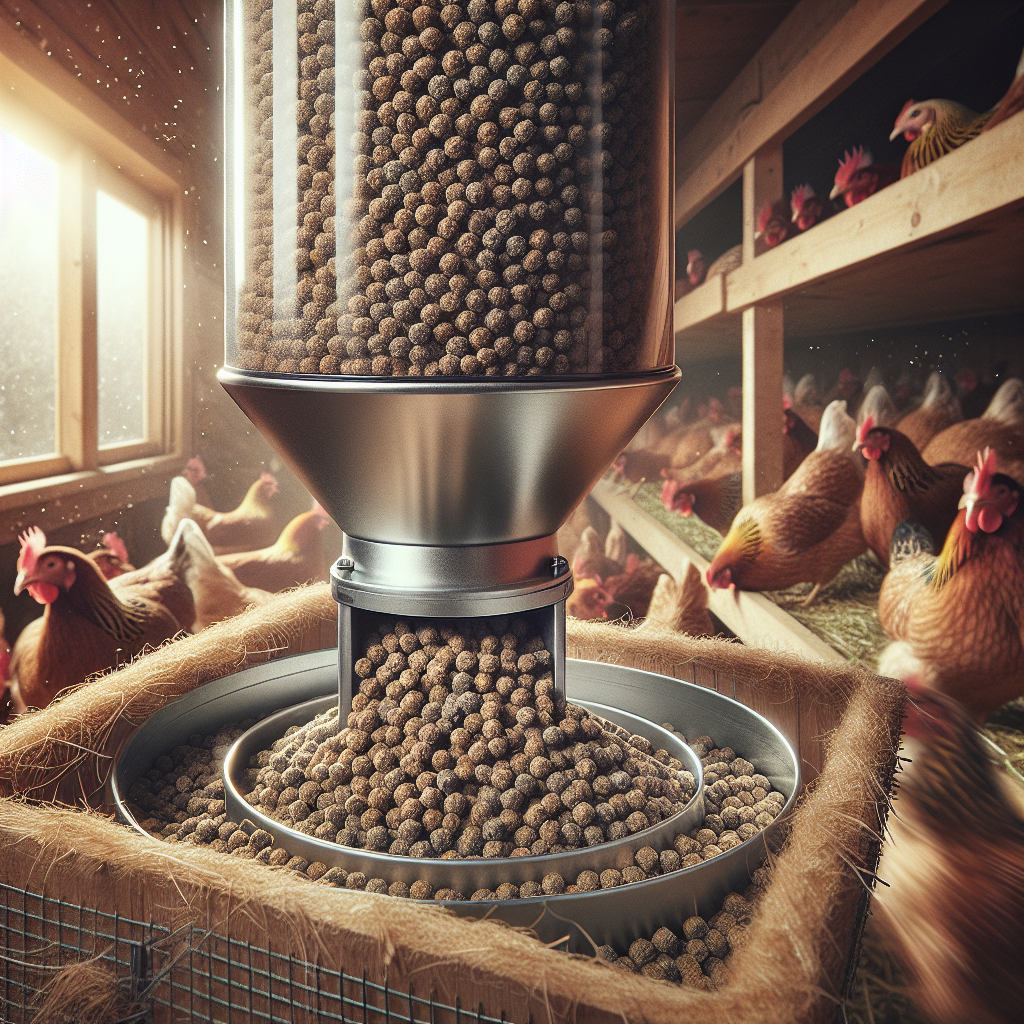If you’re a proud owner of a coop, you must be wondering how to strike the perfect balance between ventilation and safety. Ensuring the right airflow for your feathered friends while keeping them secure is crucial. Discover helpful strategies to achieve adequate ventilation in your coop design without compromising the safety of your beloved chickens. With our tips, you’ll create a comfortable and healthy environment for your feathered family members!
Importance of Adequate Ventilation in a Coop Design
Proper ventilation is vital for the health and well-being of the chickens in your coop. It ensures that fresh air circulates, preventing the buildup of harmful gases and reducing the risk of respiratory issues. Adequate ventilation also helps regulate temperature and humidity levels, promoting comfort and productivity for your feathered friends.
Preventing Health Issues in Chickens
Good ventilation is a key factor in preventing health issues in chickens. Poor air quality in the coop can lead to respiratory problems, such as respiratory infections and diseases. Ammonia from chicken waste can accumulate in poorly ventilated coops, causing eye and throat irritation, respiratory distress, and even permanent damage to the chickens’ respiratory systems. By ensuring adequate ventilation, you can minimize the risk of these health issues and create a healthier environment for your flock.
Reducing the Risk of Ammonia Buildup
Ventilation plays a crucial role in reducing the risk of ammonia buildup in the coop. Ammonia is a harmful gas that is released from chicken droppings. In an enclosed and poorly ventilated coop, ammonia levels can quickly rise to dangerous levels, posing a serious threat to the respiratory health of your chickens. By providing proper airflow, you can effectively dissipate ammonia and maintain a healthier living space for your feathered companions.
Promoting Comfort and Productivity
Adequate ventilation not only benefits the health of your chickens but also promotes their overall comfort and productivity. Proper airflow helps regulate temperature and humidity levels inside the coop, creating a more comfortable living environment. Chickens that are comfortable are more likely to exhibit natural behaviors, eat well, and lay eggs consistently. By ensuring adequate ventilation, you can provide your chickens with a conducive environment that supports their well-being and productivity.
Safety Considerations in Coop Ventilation
While ventilation is crucial, it’s important to prioritize safety when designing your coop. Here are some critical safety considerations to keep in mind:
Preventing Predator Entry
When designing ventilation openings, it’s essential to take measures to prevent predator entry. Use hardware cloth or mesh wiring with small openings to cover windows, vents, and openings in the coop. This will allow for airflow while effectively keeping predators out. Ensure that the hardware cloth or mesh is securely attached and free from any gaps or loose ends that could allow access to unwanted visitors.
Avoiding Drafts and Cold Temperatures
Proper ventilation should not lead to drafts or expose chickens to cold temperatures. Cold drafts can cause stress, dampness, and even frostbite in chickens. Avoid placing ventilation openings directly above roosts or in a way that air currents blow directly onto the chickens. By carefully positioning the ventilation openings, you can maintain good airflow without subjecting your flock to uncomfortable drafts and cold temperatures.
Ensuring Fire Safety Precautions
Ventilation openings should not compromise fire safety measures in your coop. Avoid placing openings near combustible materials or heat sources. Secure all electrical wiring and ensure that any ventilation equipment, such as exhaust fans or mechanical ventilation systems, are properly installed and maintained according to safety standards. Regularly inspect and clean the ventilation openings to prevent the buildup of flammable materials like dust or feathers.
Factors to Consider When Designing Coop Ventilation
To ensure efficient ventilation in your coop, consider the following factors:
Coop Size and Layout
The size and layout of your coop will determine the number and placement of ventilation openings. A larger coop may require multiple ventilation points to ensure adequate airflow. Position the openings strategically to allow for cross-ventilation and airflow throughout the entire coop space. Consider the orientation of the coop in relation to prevailing winds to maximize natural airflow.
Climate and Weather Conditions
The climate and weather conditions of your location also play a significant role in coop ventilation. In regions with hot summers, you may need larger openings and additional shading to prevent excessive heat buildup. Similarly, cold winters may necessitate insulation and extra protection against drafts. Understanding the climate patterns in your area will help you determine the appropriate ventilation requirements for your coop.
Number of Chickens and Their Activity Levels
The number of chickens and their level of activity will impact the ventilation needs of your coop. More chickens generate more heat, moisture, and ammonia, requiring higher ventilation rates to maintain air quality. For active chickens that spend a significant amount of time in the coop, such as during extreme weather conditions, additional ventilation may be necessary. Monitor the behavior and overall health of your chickens to gauge if the ventilation is sufficient.
Environmental Factors
Consider other environmental factors such as nearby sources of pollution or strong odors that could affect air quality in your coop. If possible, position the coop away from these sources to minimize the risk of contamination. Additionally, assess the surrounding vegetation and potential for dust or allergens that could impact the air quality within the coop.
Natural Ventilation Options
Utilizing natural ventilation methods can provide effective airflow while minimizing the reliance on electrical equipment. Here are some natural ventilation options to consider:
Windows and Openings
Windows and openings are simple yet effective methods of providing natural ventilation in a coop. Position windows strategically to allow for cross-ventilation, ensuring fresh air flows through the coop. Adjustable windows, such as sliding or hinged windows, provide flexibility in controlling airflow. Remember to cover the openings with hardware cloth or mesh wiring to prevent predator entry.
Roof Vents and Cupolas
Roof vents and cupolas are excellent options for allowing hot air to escape from the coop. Hot air naturally rises, and by installing vents or cupolas on the roof, you can create a passive airflow system. This not only helps regulate temperature but also allows stale air to be expelled, promoting fresher air circulation within the coop.
Gable Vents or Louvers
Gable vents or louvers are another effective way to promote natural airflow in the coop. These vents are typically placed in the gable ends of the coop and can be constructed with adjustable slats to control airflow. By positioning gable vents appropriately, you can facilitate proper ventilation while preventing drafts.
Solar Ventilation
Solar ventilation systems utilize the sun’s energy to power fans or vents that facilitate airflow. These systems are eco-friendly and rely on solar panels to capture sunlight and generate electricity. Solar-powered vents or fans can be a great addition to your coop, ensuring consistent ventilation without the need for electricity.
Artificial Ventilation Options
In addition to natural ventilation, artificial ventilation options can be employed to enhance the airflow within the coop. These options are particularly useful in areas with limited natural airflow or during periods when natural ventilation alone may not be sufficient. Consider the following artificial ventilation options:
Exhaust Fans
Exhaust fans, commonly used in commercial settings, can effectively remove stale air and moisture from the coop. These fans are installed in specific locations, such as high on the wall or in the ceiling, to facilitate the expulsion of warm air and humidity. Ensure that the fans are adequately sized for your coop and positioned to allow for proper airflow.
Ceiling Fans
Ceiling fans can help enhance airflow within the coop, especially in larger coops with high ceilings. By circulating the air, ceiling fans can prevent stagnant pockets and maintain a more consistent temperature. Install the fans at an appropriate height and ensure they are safely secured to prevent accidents.
Mechanical Ventilation Systems
Mechanical ventilation systems, such as HVAC systems or electronic controllers, can be utilized to regulate airflow and maintain optimal conditions in the coop. These systems offer precise control over temperature, humidity, and air quality. However, they require professional installation and maintenance and may not be suitable for all coop sizes or budgets.
Balancing Ventilation Needs with Safety Measures
While ensuring adequate ventilation is crucial, it is equally important to balance ventilation needs with safety measures. Here are some considerations to maintain a safe coop environment:
Use of Hardware Cloth or Mesh Wiring for Openings
To prevent predator entry, cover all ventilation openings with hardware cloth or mesh wiring. Ensure that the openings are small enough to keep out predators while still allowing sufficient airflow. Regularly inspect the hardware cloth or mesh to make sure it is intact and free from any damage or gaps.
Properly Secured Window and Door Designs
Windows and doors should be securely built and properly sealed. Check for any gaps or openings that could compromise the safety of your coop. Use high-quality hinges, locks, and latches to ensure that windows and doors are tightly closed and cannot be easily accessed by predators.
Positioning Ventilation Openings to Prevent Predator Access
Carefully consider the positioning of ventilation openings to prevent predator access. Avoid placing openings near trees or other structures that can serve as access points for predators. Install predator-proof covers or screens on the inside of the openings to further deter intruders.
Maintenance and Cleaning for Optimal Ventilation
Regular maintenance and cleaning are essential to ensure that your coop’s ventilation remains efficient. Here are some practices to maintain optimal ventilation:
Regularly Cleaning Ventilation Openings
Clean the ventilation openings regularly to remove any debris, dust, or cobwebs that may impede airflow. Use a soft brush or a vacuum cleaner to gently remove any buildup. Regular cleaning will help prevent blockages and ensure that fresh air can freely enter and circulate within the coop.
Replacing Damaged Screens or Mesh
Inspect the hardware cloth or mesh wiring covering the ventilation openings periodically. Replace any damaged or worn-out sections to maintain a secure barrier against predators. Repair or replace any holes or gaps that may have developed over time.
Keeping Coop and Bedding Dry
A damp coop or wet bedding can lead to poor air quality and increased health risks for your chickens. Regularly remove any wet bedding or soiled areas to maintain a clean and dry living environment. You can also add a layer of dry bedding to absorb excess moisture. Ensure that the coop is well-ventilated to prevent the buildup of moisture.
Monitoring and Adjusting Ventilation Levels
Regular monitoring of ventilation levels is essential to ensure optimal airflow for your chickens. Here are some ways to assess and adjust ventilation levels:
Observing Chicken Behavior and Health
Observe your chickens’ behavior and overall health to gauge if the ventilation is adequate. Signs of poor ventilation include excessive panting, reduced activity levels, and respiratory distress. Adjust the ventilation accordingly if you notice any signs of discomfort or health issues.
Using Temperature and Humidity Gauges
Use temperature and humidity gauges to monitor the conditions within the coop. Maintain a comfortable temperature range (around 65-75°F) and an appropriate humidity level (around 40-70%) for your chickens. Adjust the ventilation based on the readings to achieve optimal conditions.
Seeking Advice from Local Experts
If you are unsure about the ventilation needs of your coop or need guidance in designing an efficient system, consider seeking advice from local poultry experts or fellow chicken enthusiasts. They may have valuable insights based on their experience in your specific area and can provide recommendations tailored to your situation.
Considerations for Extreme Weather Conditions
Extreme weather conditions, such as cold winters or hot summers, require additional considerations for coop ventilation. Here are some tips to address these challenges:
Insulation for Cold Winters
During cold winters, insulation is crucial to keep the coop warm and minimize heat loss. Insulate the walls and roof of the coop using materials such as foam boards or fiberglass insulation. Pay attention to the ventilation openings and ensure that they are properly insulated to prevent drafts while maintaining adequate airflow.
Shading and Cooling Methods for Hot Summers
In hot summers, shading and cooling methods are essential to prevent the coop from becoming excessively hot. Provide shade outside the coop using trees, awnings, or shade sails. Install reflective materials on the roof to reflect sunlight and reduce heat absorption. Consider additional cooling methods, such as misting systems or fans, to help lower the temperature within the coop.
Conclusion
Adequate ventilation is a crucial element in the design and maintenance of a chicken coop. It helps prevent health issues, reduces the risk of ammonia buildup, and promotes comfort and productivity for your chickens. While ensuring proper ventilation, it is important to prioritize safety by considering predator prevention, avoiding drafts, and implementing fire safety precautions. Factors such as coop size, climate conditions, chicken activity levels, and environmental factors should be considered when designing ventilation systems. Natural ventilation options, such as windows, roof vents, and gable vents, can be effective, while artificial options like exhaust fans and mechanical systems provide additional airflow control. Balance ventilation needs with safety measures by using hardware cloth, securing windows and doors, and positioning ventilation openings strategically. Regular maintenance, cleaning, and monitoring of ventilation levels are essential for optimal ventilation. Consider extreme weather conditions and adjust ventilation accordingly to keep your chickens comfortable year-round. With proper ventilation, you can create a welcoming and healthy environment for your flock, ensuring their well-being and productivity.




